nautilus works
nautilus works
Reckleford
 Around
1881
James
Bazeley Petter
founded the
Nautilus Stove
Co, making
grates and
kitchen ranges.
Initially these
were made at the
Nautilus Grate
Works in
Hendford but
later moved to
Vicarage Street.
Around
1881
James
Bazeley Petter
founded the
Nautilus Stove
Co, making
grates and
kitchen ranges.
Initially these
were made at the
Nautilus Grate
Works in
Hendford but
later moved to
Vicarage Street.
In 1882 Petter showed his Nautilus Grate at the Manchester Smoke Abatement Exhibition and after Queen Victoria installed Nautilus fire grates at Balmoral Castle and Osborne House, demand for them grew substantially. Within a few years Petter and his two sons Ernest and Percy began making oil engines, and production of these grew steadily. In the mid to late 1890s they also began the manufacture of motorcars and believing that they had a great opportunity the brothers, with the father, formed the Yeovil Motor Car Co Ltd in 1895 with £1000 capital and a factory was built on the site of James's garden in Reckleford. This was to be named the Nautilus Works in commemoration of his Nautilus grate invention.
 The Nautilus
Works was
designed by
James Petter's
son, John, and
his partner
Percy Warren.
Petter & Warren
had first
established
themselves in
Southampton as
an architectural
practice however
they didn't
succeed in
getting a start
and the offices
at the Nautilus
Works were their
first
commission.
The Nautilus
Works was
designed by
James Petter's
son, John, and
his partner
Percy Warren.
Petter & Warren
had first
established
themselves in
Southampton as
an architectural
practice however
they didn't
succeed in
getting a start
and the offices
at the Nautilus
Works were their
first
commission.
Other work quickly followed for them and they ultimately built up a large and lucrative practice in Yeovil. They were later to design the Nissen-Petren prototype steel-framed houses.
For most of its working life with Petters, the factory was used to manufacture their oil engines. At the outbreak of the First World War the Petters family offered their facilities to the British government to produce war materials and by early 1915 the Reckleford works was already producing 18 pounder shell cases as seen in the Gallery below. During the Second World War the Nautilus Works was used to store sheet metal and other equipment as part of a dispersal policy for the aircraft works at Westland.
|
Tragic
death of
a young
apprentice
at the
Nautilus
Works My uncle, Frederick Charles Collard, age 16, of 4 Vincent Street, died on Wednesday 13th November 1912, as a result of an accident at the Nautilus Works on the 8th of November. He was an apprentice at the factory and had worked there for ten months. A drive shaft from a large engine passed though the building; all the machines in the workshop were driven by belts on pulleys on the shaft going to each machine, lathes, drills, and grinders. Fred’s belt came off the top pulley and instead of calling his supervisor, he stood on a ladder and attempted to replace it himself. His coat became caught in the drive-belt and he was whirled around the shaft, breaking the glass roof. The engine was stopped and the workers freed him. His father, my grandfather, William Collard, who also worked at the factory was with him after the accident. Fred said "Sorry dad".
He was taken to Yeovil Hospital where it was found both legs were broken, also his right arm and other injuries. He was conscious the whole time and even gave an account of the accident. He died five days latter of gangrene and lockjaw. With modern medicine he would probably been saved now. The funeral was attended by over 400 people and the factory closed for the day. His mother received a long letter of condolence from Mrs Petter but she never got over her loss.
He was a good sportsman and a keen athlete and with his father took part in the Petter’s Annual Sports Day 13th July 1912, at the County Cricket Ground at the end of West Hendford, winning several events, including the three-legged race with his father. He had hoped to join the Royal Navy as an artificer.
|
In 1937 the Petter twins, Ernest and Percy, both retired and in 1939 Associated British Oil Engine Co Ltd acquired the Petter engine business and moved all engine production to the British Electrical Engine Co plant in Loughborough.
in 1924 to the newly-founded Yeovil Light & Power Company purchased the old Nautilus Works power house and equipment in Dampier Street, augmenting it with more modern plant in 1928 as demand increased. The Nautilus Works was also later sold off and, certainly by the mid-1950's, became the Southern National bus depot. It is now the depot of the First Group bus company.
Industrial checks were used to record that a workman was present on a shift, in relation to pay or as receipts for tools issued from a central store. Only two Yeovil companies are known to have produced industrial checks - Petters and Westlands.
|
|
These brass tokens - the two in my collection are both stamped '246' on the plain reverse - were issued by Petters Limited. Around the edge of the obverse is "PETTERS LIMITED" and "YEOVIL" around a central nautilus, the logo of the company based on James Petter's Nautilus Fire Grate. These tokens probably date to the inter-war period and were used at the Nautilus Works in Reckleford. Of brass, the tokens are 32mm in diameter and 1.8mm thick. |
See also Yeovil Trade Tokens and Checks
From 1960 the first floor of the original part of the Nautilus Works on the corner of Reckleford and Goldcroft was occupied by glove manufacturers Denner and Vaughan, until the company closed in 1976.
The Nautilus Works is currently (November 2015) for sale at £650,000.
gallery

This part of the Nautilus Works, on the corner of Reckleford and Goldcroft, was the original office block designed by Petters & Warren and was one of the first parts of the factory to be built on the three-acre site.

By the beginning
of 1913 the
whole of the
three-acre site
at Reckleford,
which had
originally been
the garden of
James Petter,
was completely
occupied by
buildings and
the necessary
yard spaces for
their machinery.
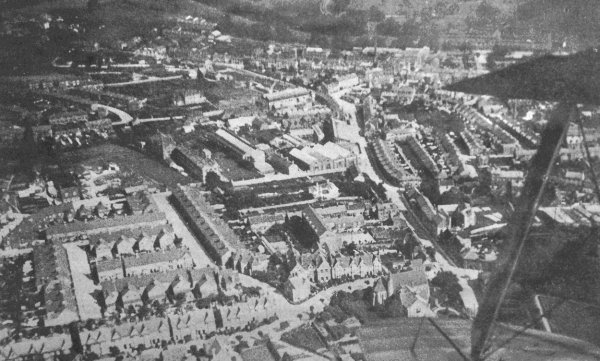
A 1919 aerial photograph taken from a biplane - its wing-tips and strut are seen at right. At the end of the lower wing-tip is the Church of the Holy Ghost and running across the bottom of the photograph is The Avenue. Running from the lower wing-tip towards the top of the photograph is Reckleford with the Nautilus Works at centre and Salisbury Terrace opposite.
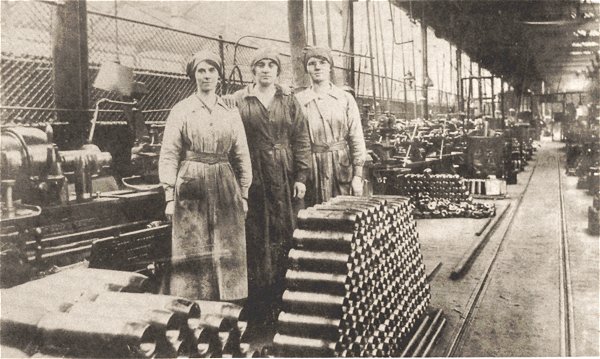
At the outbreak
of the First
World War the
Petters family
offered their
facilities to
the British
government to
produce war
materials and by
early 1915 the
Reckleford works
was already
producing 18
pounder shell
cases as seen in
the photograph
above. This is
the long factory
building that
runs parallel
with Reckleford.
The lady at
right was Alice
Partridge.

A group of munitions workers (presumably with their male foreman) circa 1917. Alice Partridge is at front left.

.... and then everybody crowded in for their photo.

This photograph taken at the Nautilus Works probably dates to 1919 since munitions production has ceased but two women remain to make up the depleted workforce.
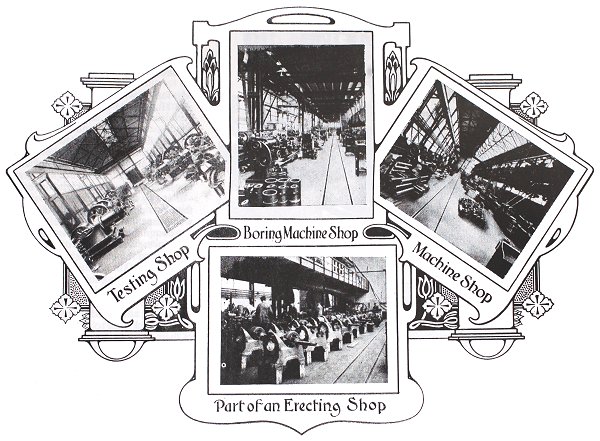
The image here
shows various
scenes within
the Nautilus
works at
Reckleford, the
individual
photographs are
enlarged below.
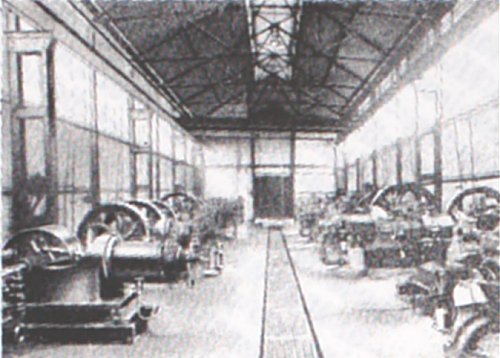
The testing shop shows a number of larger oil engines in position and undergoing testing.
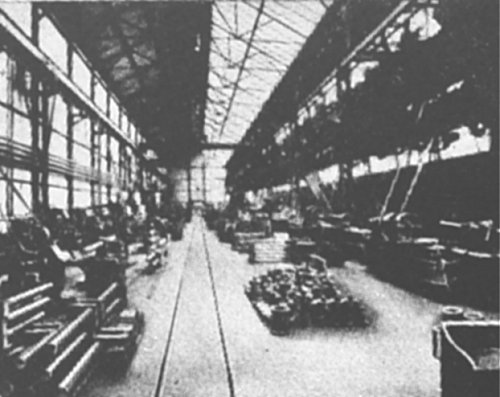
The machine shop is seen in peace time, this view is almost identical to the one above showing production of 18 pounder showcases.
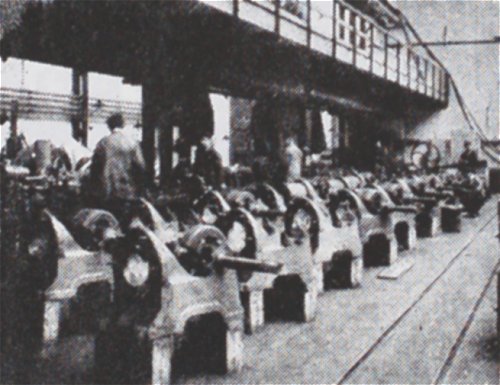
The erecting shop was where the oil engines were constructed and this view shows several lines of engine bed castings.
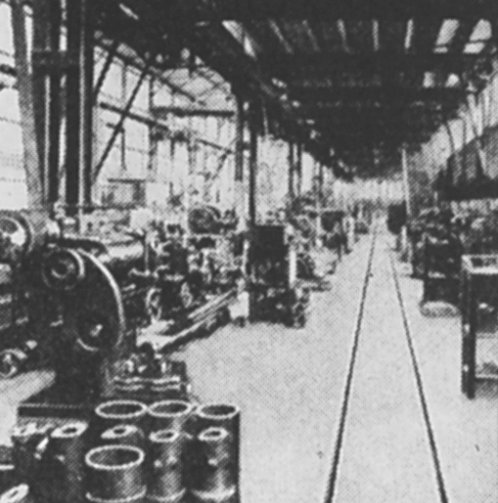
The boring machine shop was set up with machinery to undertake particularly complex boring of the castings and other engine components.

A colourised photograph of the blacksmith's shop, around 1913.

Machine shop workers photographed shortly before the First World War.

Various models of Petter's oil engines being assembled in the Nautilus Works.

Castings for parts of oil engines being machined, probably in the 1920's.
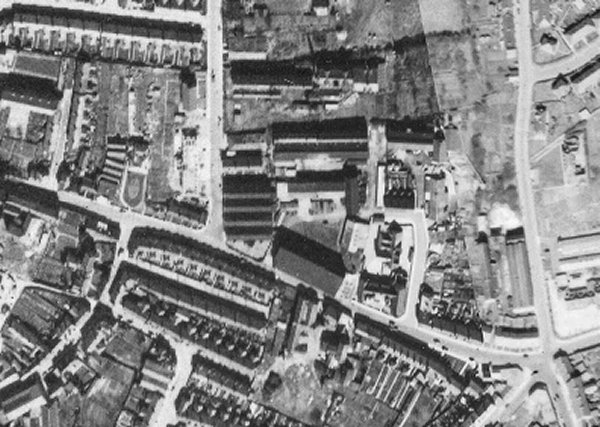
A 1946 aerial view of the Nautilus Works at centre, sandwiched between Goldcroft at left of centre, Dampier Street at right of centre and Reckleford running across the photograph. Notice how narrow Reckleford is.
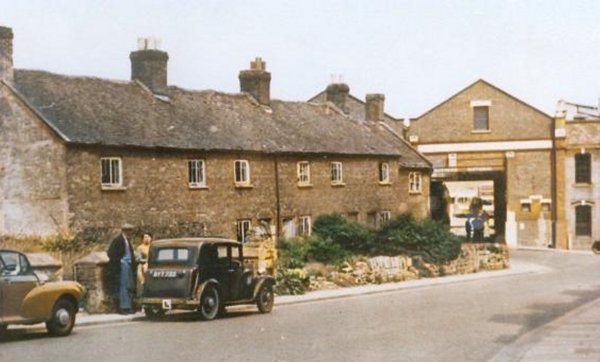
A view of Reckleford taken about 1955 with the junction with Goldcroft at centre and the Nautilus Works at right.

Looking down Reckleford in the early 1960's with Goldcroft and the Nautilus Works at left and Salisbury Terrace at right. Note that the cottages seen in the previous photograph have gone in this one - the photographer was standing roughly where they had been. At right, Salisbury Terrace would soon be demolished for the widening of Reckleford to dual carriageway.
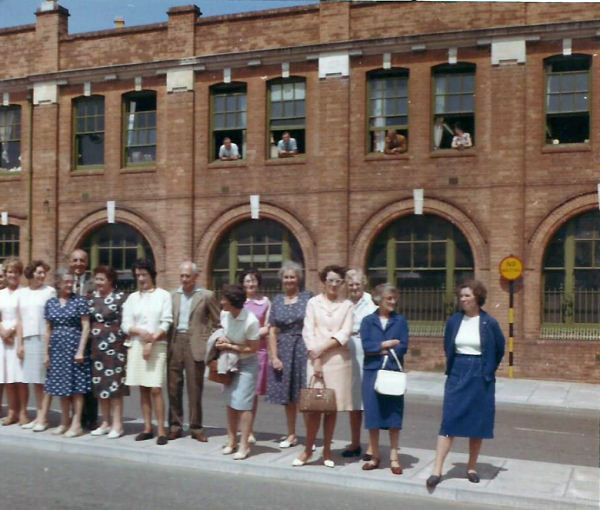
Courtesy of
Brian Vaughan
Denner and Vaughan staff pose outside the company's works on the first floor of the Nautilus Works, Reckleford, in 1964.
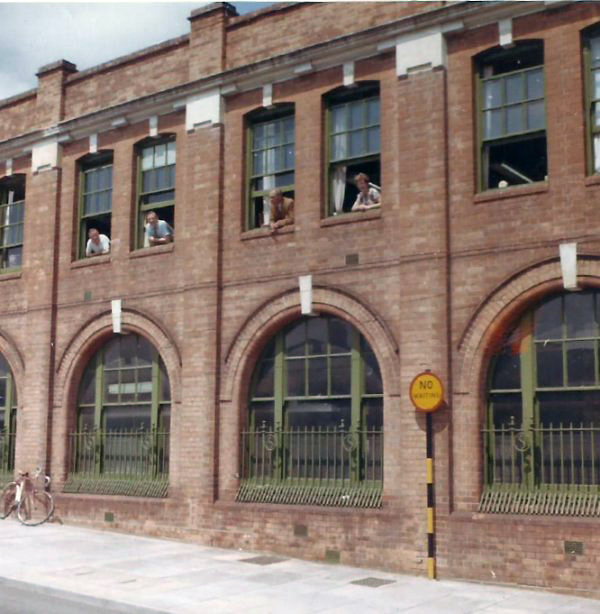
Courtesy of
Brian Vaughan
Another shot of the Denner and Vaughan works in the Nautilus Works in 1964.

This photograph
features in my
book "Yeovil
In 50 Buildings"
The whole of the Nautilus Works' Reckleford elevation. Photographed in 2017.
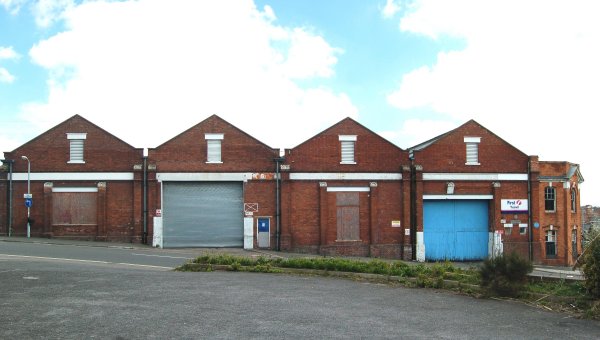
The Goldcroft elevation. Photographed in 2013.
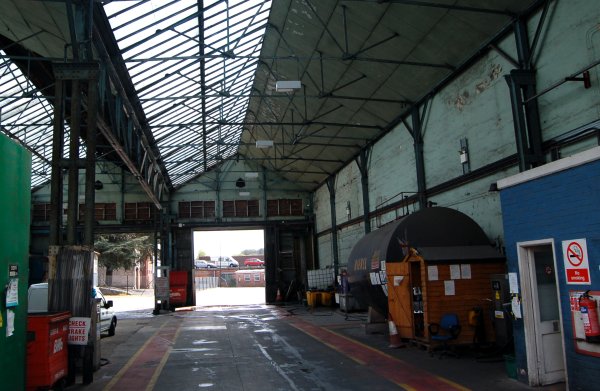
This photograph
features in my
book "Yeovil
In 50 Buildings"
Inside one of the factory bays seen from Goldcroft. Photographed in 2013.
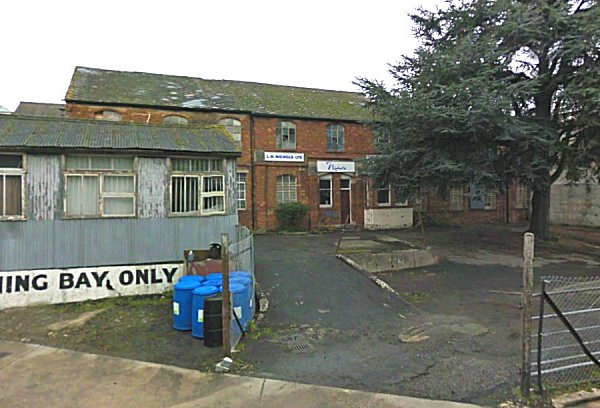
Some of the interior buildings also survive, let out to small companies. Photographed in 2013. The brick-built factory seen here and last used by LH Nichols Ltd as a leather works, was demolished in 2015.
gallery by jon england
Jon England is an artist based near Taunton and one of four artists to have been awarded a micro-residency at the Eastville Project Space at the former W Tavener & Son glove factory. Jon has used his 2016 residency at Eastville to further his investigation of the legacy of global conflict within local communities. Jon's work predominantly explores the architectural and social dynamics of these legacies whilst employing experimental materials and processes to create physical and resonant connections to the histories investigated. Below are two of Jon's works featuring the Nautilus works fabric combined with images of its workers during the Great War.
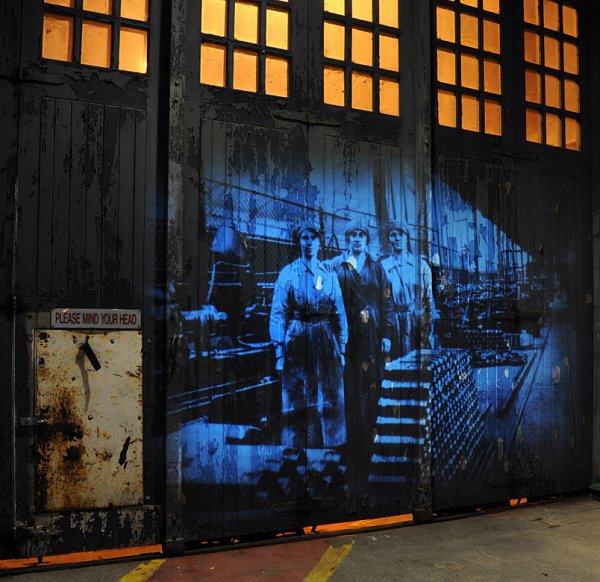
Courtesy of Jon
England
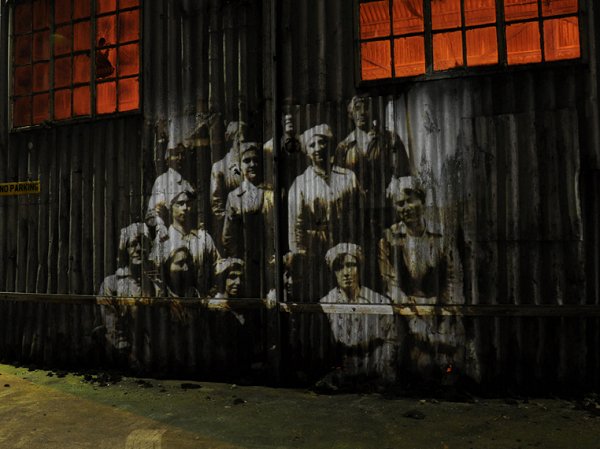
Courtesy of Jon
England
